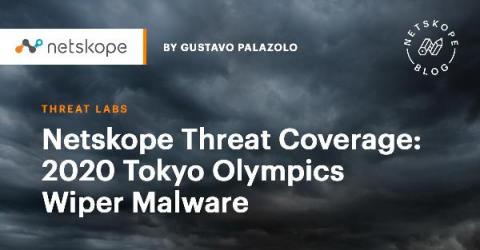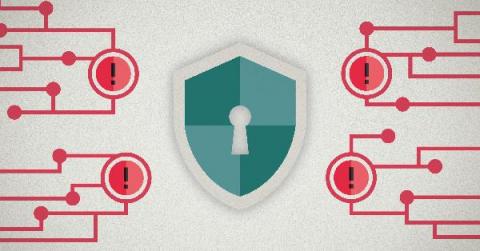Security | Threat Detection | Cyberattacks | DevSecOps | Compliance
Malware
Conti Threat Research Update and Detections
The Splunk Threat Research team has researched two of the current payloads involved in these heinous campaigns against healthcare and first responder organizations such as Conti & REvil. In the first blog, we explored the REvil ransomware group and in this blog, we will explore Conti.
Defending against ransomware - The basics
Given the spate of recent ransomware attacks, the latest of which occurred shortly before Independence Day, this topic is likely at the top of mind for most organizations. Understanding the fundamentals of security, and the most common ways ransomware gets installed, is a must if a company hopes to truly lay the groundwork required to build and operationalize their security program.
Netskope Threat Coverage: 2020 Tokyo Olympics Wiper Malware
Major sporting events, like the World Cup or the Olympics, are usually targets of cybercriminals that take advantage of the event’s popularity. During the 2018 World Cup, for example, an infected document disguised as a “game prediction” delivered malware that stole sensitive data from its victims, including keystrokes and screenshots.
10 Common Cyber Attack Vectors and How to Avoid Them
When it comes to cybercrime, cybercriminals are constantly changing their tactics. Think back to 10 years ago; malware sites — malicious sites that attempt to install malware on a device – were a common attack vector. At the same time, sophisticated ransomware attacks on organizations were rare. Often, ransomware was used to target individuals, sometimes blackmailing them for having been on unsavory sites and asking for a few hundred dollars in ransom.
Malware alert: The RedXOR and Mamba attacks and how to defend against them
Picture this: It’s a normal day of working from home as usual since the COVID-19 outbreak. After that satisfying cup of coffee, you log in. But something is wrong. No matter how many times you click, your files don’t open. Your screen is frozen and refuses to budge. And then, you see one of the worst nightmares any IT admin can imagine: “Oops, your files have been encrypted. But don’t worry, we haven’t deleted them yet.
How Network Segmentation Can Protect Supply Chains from Ransomware Attacks
Organizations can take various steps to protect their operational technology (OT) environments against digital threats. But some stand out more than others. In particular, network segmentation is described as “the first answer to insufficient ICS (Industrial Control System) cybersecurity.” Experts advocate zoning ICS assets to coordinate informational technology (IT) and OT environments effectively. That doesn’t always happen, however.
Defending the Internet of Things from hackers and viruses
The 2010 Stuxnet malicious software attack on a uranium enrichment plant in Iran had all the twists and turns of a spy thriller. The plant was air gapped (not connected to the internet) so it couldn’t be targeted directly by an outsider. Instead, the attackers infected five of the plant’s partner organizations, hoping that an engineer from one of them would unknowingly introduce the malware to the network via a thumb drive.











